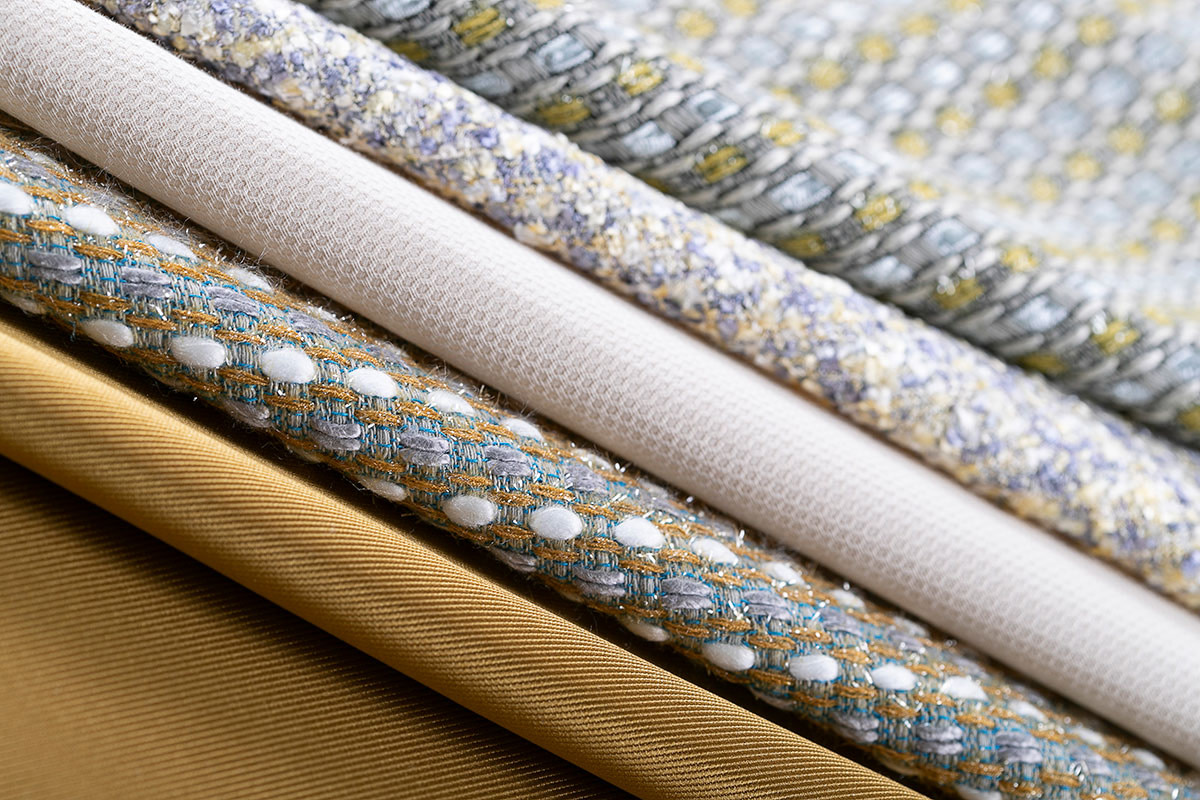Textile weaves: discover the three main types and the fabrics that use them.
A fabric weave refers to the way warp threads are interwoven with the weft yarns. We have three basic weaves, from which we can then build many other combinations (secondary weaves).
The basic weaves are: Plain, Twill and Satin.
It is important to know more about fabric weaves, because the types of the weave of the fabric can determine the smoothness, comfort, thickness, durability, tear strength and even drape of the fabric.

Plain weave
This is the simplest weave and is obtained by interlacing horizontal weft threads on vertical warp threads, going over the first and under the second, over the third and so on. Because of such rigorous interlacing the plain weave is the most solid construction. The fabric with plain weave has the same right and reverse sides and can be very light and airy without sacrificing stability.
It is also called tabby weave or taffeta weave or linen weave.
There are many variations of this weave: by combining the materials, the characteristics of the yarn (colour, size, type) and the reductions, very different results are obtained.
Fabrics woven with plain weave are: batiste, crepe, percale, taffeta, chiffon, georgette, organza, muslin.
The basket weave, also called hopsack weave, is a variation of the plain weave obtained by equal extension of the number of both warp and weft threads (doubled, tripled): the result is an effect like a straw basket.
The fabric woven with a basket weave has a matte weave and flexibility and a looser construction. It is not as durable as plain weave, though and may shrink in the wash. It is difficult to sew.
The rib weave is a modification of a plain weave in which two or more paired warp yarns intertwine simultaneously with one or more weft yarns. The effect is a chessboard with an equal right to the reverse.
In our online shop you can find the following fabrics woven with plain weave: crepe de chine, crepe de chine stretch, wool double crêpe, taffeta, chiffon, georgette, organza, pique stretch, wool crepe, cady and muslin.
Twill weave
Twill weave is distinguished by diagonal lines.
In this weave, one or more warp fibers alternately weave over and under two or more weft fibers repeatedly (weft-faced) or one or more weft fibers alternately weave over and under two or more warp fibers repeatedly (warp-faced), creating a characteristic diagonal appearance.
It is a very versatile and resistant weave, characterized by parallel diagonal lines, with the front side different from the back side.
Fabrics made with this weave are not stiff, they adapt to movement with a beautiful drape, even if they are made with heavy yarns.
The most used material for this weave is wool, but cotton, silk and synthetic yarns can also be used.
Silk twill is widely used as a base for accessories, such as scarves or pareos with fancy prints.
In denim, inarguably the most famous twill fabric, the weft-thread is white or off-white and the warp-thread is indigo-dyed.
In our online shop of new tess you can find the following fabrics woven with twill weave: gabardine stretch, radzemire, tweed and tartan.
Satin weave
Although satin-weave drafts superficially resemble those of twills, satin weave does not have the regular step in each successive weft that is characteristic of twills. Thus, the intertwining of the threads does not give rise to diagonal lines but to spaced and evenly distributed spots.
The fabric is smooth faced, with an unbroken and lustrous surface, made up of long floating warp yarns.
This weave offers the best results with the use of silk yarns, making the fabrics smooth and uniform.
The main fabrics with this weave are: satin, rasatello, duchesse, damask, brocade, lampas.
Normally satins are heavier than plain weaves or twills, but they have a soft handle and excellent drape.
In our online shop you can find the following fabrics woven with satin weave: shantung satin, stretch satin, cotton sateen stretch, lightweight cotton sateen stretch, duchesse, crepe satin.
